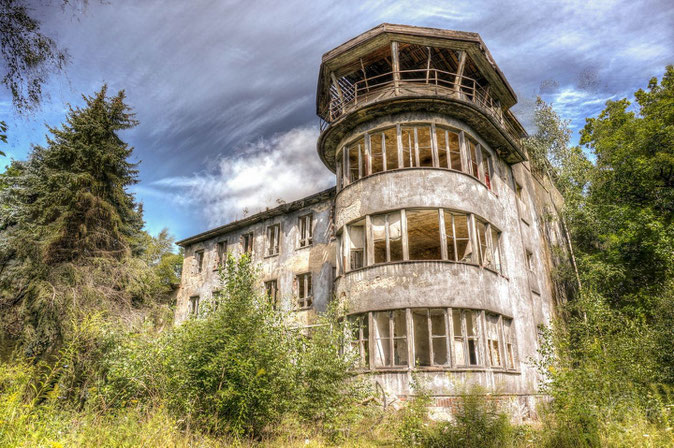Soviet Airfield B.
This airfield was originally built for the blind flying school and had a runway that was 1.800 meters long and 80 meters wide. The airfield was also used as a testing area by the Junkers company.
Among others, the circular-winged Sack AS-6 was tested here.
A second runway as well as an assembly hall for the jet fighter Messerschmidt Me 163 couldn't be finished by the end of World War II.
From November '43 until April '44, the "Kampfgeschwader 1 'Hindenburg'" was outfitted here with the new heavy bomber Heinkel He 177.
During the years 1944 and 1945, the airfield was victim to various air raids by the US Army Air Force (USAAF) which seized the airfield in April of 1945.
From July 1945, the Red Army took over the airfield. In the following years, damaged buildings were repaired or demolished by the Soviet forces.
In 1954, the first MiG-15 jet fighters were stationed on the airfield, in later years, mostly attack aircraft and helicopters were stationed here.
The airfild was mainly used as a reserve from 1955-61. From 1960 on, the infrastructure was continually improved, the runway was expanded and new roads were built.
Since the beginning of the 1960s, the 239th autonomous Helicopter Regiment with Mi-4, Mi-6, Mi-8 and Mi-10 helicopters was stationed here. In the 1970s, a maintenance hangar for the Mi-2
heleicopters was built that had been station on the airfield since 1969. Further living quarters for the military personnel were built.
The deployment switched in 1977, when the thransport helicopters were moved to a different area and were followed by Mi-8 and Mi-24 attack helicopters from the 225th Attack Helicopter Regiment.
In the following years, various units came through this airfield, and shatter protection buildings for airplanes were built. A Soviet drone squadron was also stationed here during the
1980s.
The last flights of Soviet units took place in April of 1992 with Su-25 airplanes and in May of that year with Mi-8 and Mil Mi-24 helicopters.
In August of 1992, the last material transports took place with An-12 and Il-76 airplanes.
After that, the airfield was given back to the German authorities.







































